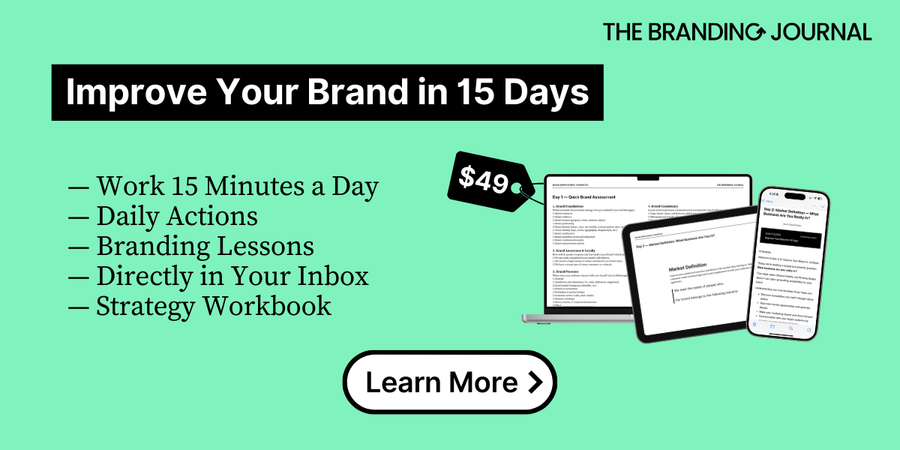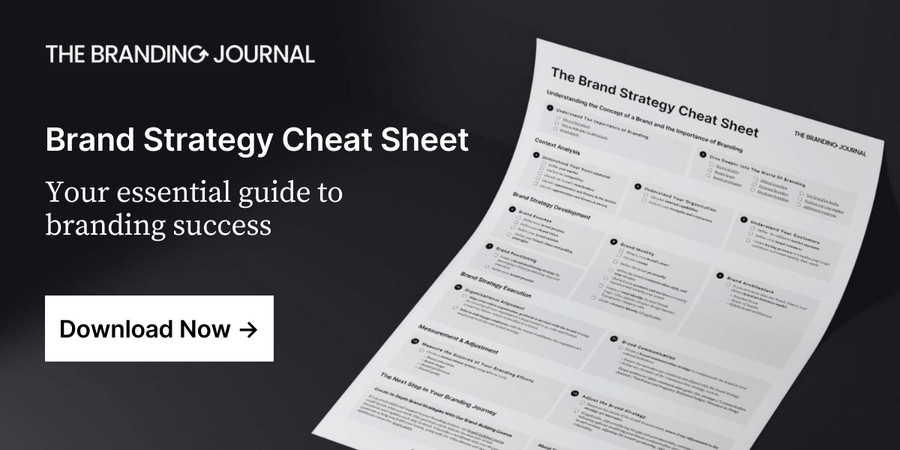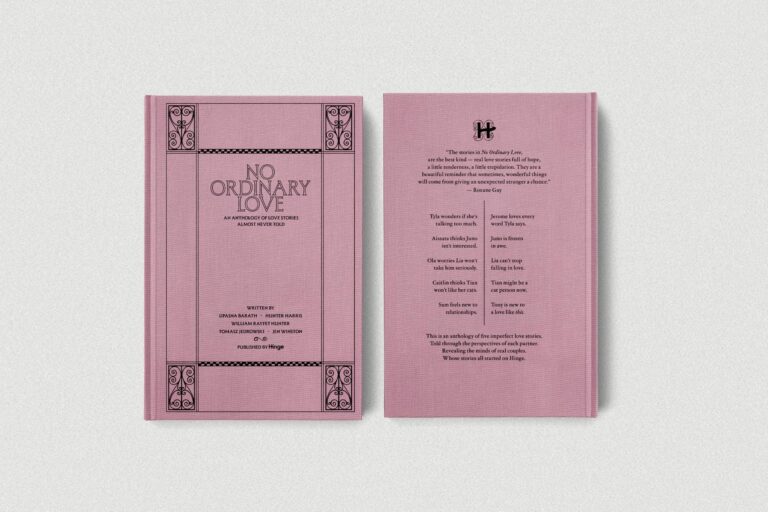A few months ago, I attended a business conference for startups and was surprised that the main speakers and workshops barely mentioned branding.
The whole focus was on AI, innovation, and financial investments.
Of course, startups and small businesses need first to validate their ideas, ensure financial viability, and generate sales—all while working with limited resources. Still, developing a brand early on can set a small company apart, helping it stand out and grow faster than its competitors.
If you’re interested in building your brand but have a tight budget, grab your a cup of coffee and keep reading, because this article is perfect for you.
Proven Systems for Business Owners, Marketers, and Agencies
→ Our mini-course helps you audit and refine an existing brand in 15 days, just 15 minutes a day.
→ The Ultimate Brand Building System is your step-by-step blueprint to building and scaling powerful brands from scratch.
Table of Contents
What You Need to Focus On
Branding by itself is multifaceted. It blends strategy and design and includes things like market research, positioning, brand identity, logo design, communication, and management.
To keep it simple—and since working with a limited budget means focusing on what’s most important—we’ll concentrate on the three key parts of branding that matter most for startups and small businesses:
- Defining the fundamentals of the brand’s strategy
- Showing up to the world with a strong visual identity
- Building brand awareness
This focus will not only provide a clear strategic direction for your business, but it will also enable you to present a distinctive and professional-looking brand, attract more clients and investors, and ensure that people become familiar with your brand.
Step 1 – Defining the fundamentals of the brand’s strategy
A brand strategy is a comprehensive process that goes from research to measurement.
However, because your time and budget are limited, we recommend focusing on the most essential aspects of a brand’s strategy. The ones that are most central and will help your brand grow in the right direction.
Option 1 – Building a brand strategy for free
If you have no budget to spend on developing your brand strategy, we recommend you set some time apart and work on the brand strategy by yourself or with your team.
You can follow our complete, step-by-step brand strategy guide and work through each step at your own pace. Depending on how much time you have, you can either complete the entire guide or focus on the most essential aspects of brand strategy (the ones that will bring you the most results – listed below):
Research phase:
- Clarifying your market (step 1)
- Studying your competition (step 3)
- Understanding your customers (step 4)
- Anticipating market changes and external factors (steps 5 and 6)
Brand Strategy Development:
- Defining your brand’s essence, especially the purpose, vision, and values (step 1)
- Defining your brand positioning strategy and brand promise – for this, feel free to check our free preview of the brand positioning module of our course (step 2)
- Creating the brand’s identity: focus on the brand’s story, personality, and communication style (step 3)
We will work on the visual identity and brand communications plan later in this article.
Option 2 – Building a brand strategy for $49-$349
If you need additional guidance, but can’t afford the services of a brand strategist or agency, why not test our practical courses?
- If you want to improve the strategy of an existing brand, our mini email course offers quick, powerful strategic branding exercises that you can complete in under 15 minutes a day for 15 days. It’s ideal for existing brands that need a clear, strategic boost – quickly.
- If you want to build a brand strategy from scratch, our complete brand-building system includes a 60+ page strategy template and 50 easy-to-follow explainer videos. It follows the structure of our free guide, providing you with everything you need to create a comprehensive brand strategy on your own, in half the time.
Ultimately, the objective of the brand’s strategy is to establish a clear direction for your brand that will inform all future business decisions. It also allows you to define what makes your brand stand out and unique.
Try to focus on creating a unique universe around your brand, by using strong storytelling, a unique vocabulary, building a distinctive personality, etc. And one last tip: don’t hesitate to leverage the founder’s story to make emotional connections and give the brand a human face.
Step 2 – Showing up to the world with a strong visual identity
Once you’ve defined the fundamentals of your brand’s strategy, you’ve everything you need to build a strong visual identity guided by clear strategic insights.
A strong visual identity includes your brand’s logo, typography, color palette, brand imagery, and layout style. It brings your brand to life and translates the strategic elements into a visual universe. Visual identities also make brands stand out and build emotional connections with their audiences.
Here are a few tips to work on your brand’s visual identity with a limited budget:
Option 1 – Hire a freelancer or small branding studio
Working with professional graphic designers is worth the investment. We always recommend it over DIY methods, especially when it comes to your overall visual identity, web design, and packaging design (if applicable), which are crucial for small businesses.
While branding agencies may offer comprehensive visual identity packages that exceed your budget, hiring independent freelancers or small branding studios is a great alternative. Freelancers often work within more affordable budgets and can tailor their deliverables to fit your specific needs. You can find many skilled brand designers on freelancer platforms. Here are a few you can explore:
- Behance: Behance allows you to discover creative freelancers by browsing their portfolios.
- Dribbble: Browse portfolios and connect with top-rated designers & agencies worldwide.
- Fiverr: Hire freelancers for various creative tasks, including visual identity design and video production.
- Upwork: Find and hire freelancers based on their previous job performance.
You can also explore the portfolios of independent designers and studios on Instagram, Behance, and Pinterest, and contact those that best match your needs and brand’s universe.
Option 2 – The DIY method
If your budget can’t afford to hire a freelancer or branding studio, then you will have to work with free or low-cost tools. Here are some ideas to get you started:
- Create a mood board to guide your visual choices. The mood board for the visual identity should be based on the brand’s strategy and personality. It’s important to ensure that everything is consistent and aligned. You can use tools like Pinterest or Canva to create a moodboard and start defining a desired visual style for your brand.
- Work with free and low-cost tools: Many tools can help you design a logo, choose fonts and a color palette, design templates, and create a brand imagery style. We recommend checking the design section of our branding resources page, where we’ve listed all these tools for you.
- Ask for feedback and refine your designs: If you know professional graphic designers around you, why not ask them to have a look at your brand’s visual identity and get their feedback? Having the external opinion of experts in the field can help you refine and improve it.
- Remember to maintain consistency: Consistency is crucial in branding, and your visual identity should reflect your strategy at all times, as well as be coherent and aligned across all platforms. It’s essential to develop consistent templates for marketing materials, use the same fonts across all communication materials, and adhere to the logo usage and color palette guidelines.
Step 3 – Building Brand Awareness
Finally, focus on getting your brand noticed in the real world! You can have the best strategy and design in the world, but if people don’t know your brand, your efforts and money won’t pay off.
Building brand awareness is crucial, and there are many ways to do it. For startups, our recommendation is to focus on the following channels:
- Influencer partnerships (especially micro-influencers in your niche)
- Digital marketing and content creation (e.g., SEO, social media, newsletters, podcasts, videos, Google Maps, participating in online communities, paid ads)
- Building partnerships (with brands that have similar values in your industry or locally, participating in networking events)
- Focusing on the customer experience and word-of-mouth (by offering product samplings, creating referral programs, showcasing customer testimonials, etc).
- Guerilla marketing: people don’t think about it enough, but creating low-cost, unconventional, and surprising creative activations in the street or at events is a great way to generate buzz and make your brand more famous. At a time when everyone competes in the digital space, this is a great way to stand out and get known.
For more tactics to build brand awareness, please refer to our guide on brand awareness. It includes a comprehensive list of ideas to make your brand more famous out there.
Two Examples of Brands That Excelled at Building Their Brand on a Budget
Michel et Augustin
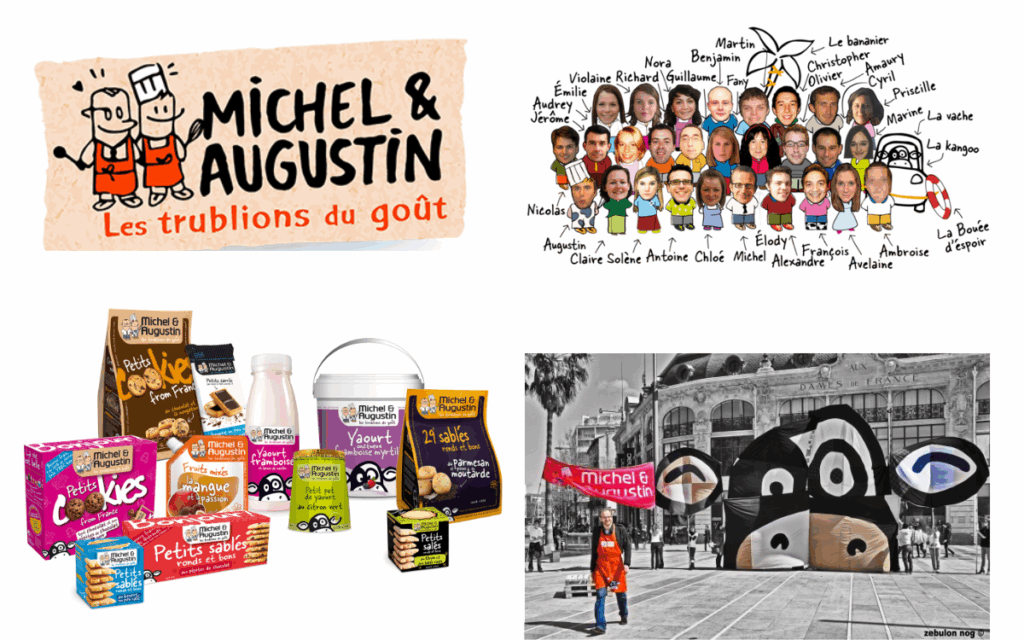
Michel et Augustin is a French food brand that offers approachable and fun snacks. They developed their brand by adopting a friendly and fun tone of voice, as well as a vocabulary unique to their brand (e.g., “la bananeraie” is how they referred to their office).
The founders engaged directly with customers to add a personal and authentic touch to their interactions. They also shared stories about their dedication to quality and craftsmanship, which resonated with consumers. The packaging has been designed to capture attention (through fun lettering and playful illustrations), and the founders focused on offering free sampling and creating several guerrilla marketing campaigns to help introduce the products.
The brand also built a community through social media, partnered with local businesses to increase visibility, and focused on a limited range of products. By handling much of the early work themselves and using a playful brand name, they kept costs low and created a memorable identity that quickly stood out.
Beardbrand
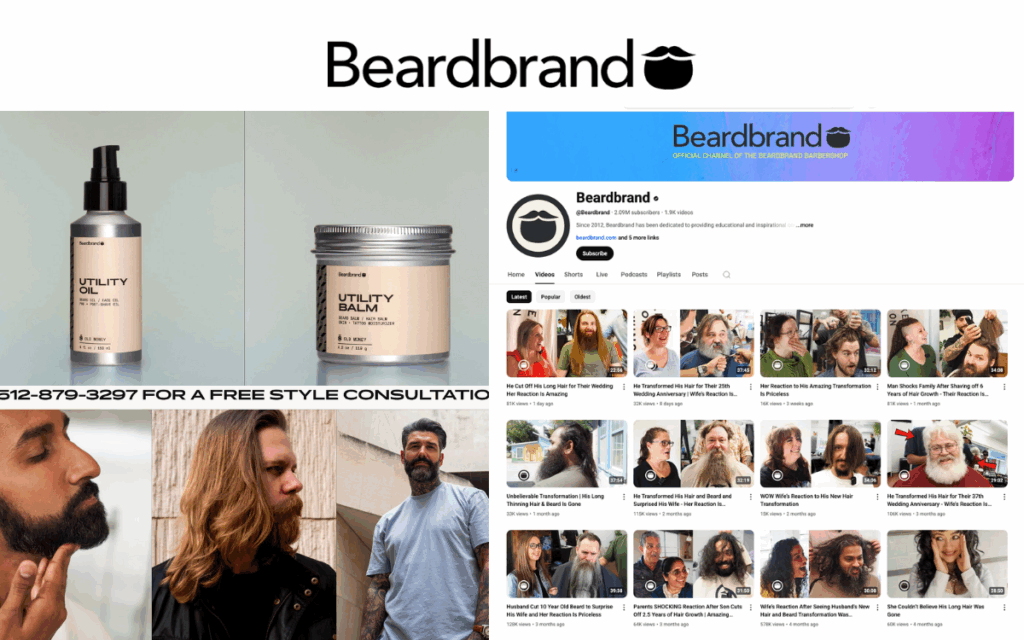
Beardbrand is a U.S. men’s grooming company specializing in beard care products and lifestyle. They mainly grew their brand by producing valuable content, such as YouTube videos and blogs, that educated their target audience of style-conscious men.
The founder’s honest and personal approach helped build trust and loyalty. Beardbrand also maintained a consistent, clean visual style across all channels while selling directly to customers online to reduce expenses. Instead of costly celebrity endorsements, they collaborated with micro-influencers within the grooming community to spread awareness more efficiently.
The brand managed to become a reference in the industry through strong content marketing that feels authentic and a clear niche focus. Now they probably have a larger budget to allocate to their marketing, but it wasn’t always the case, and they still managed to build a great brand.
Final Recap and Common Mistakes to Avoid
Building a brand on a budget requires simplicity: don’t try to overcomplicate things!
What you need to focus on is:
(1) defining the foundation of your brand’s strategy
(2) creating a strong visual identity that is aligned with the strategy, and
(3) building brand awareness.
Brand consistency is crucial, and a common mistake we see is when brands keep changing their communication style or visuals, as well as acting in a way that contradicts what they say.
Another common mistake is forgetting to incorporate ethical aspects into your brand strategy. Brand strategy has the power to influence the entire business operations by providing a clear direction to follow. By considering how your brand can operate in a more sustainable and ethical manner, you are not only ensuring that your brand remains relevant but also future-proofing it in the long term and enhancing your chances of building a stronger brand image over time.
Lastly, don’t neglect the power of storytelling! People love to connect through stories, and by sharing the origins of the brand, the founder’s story, and the various adventures of the business authentically, you can build an emotional connection with your different audiences in a truly unique way.





